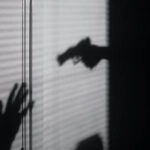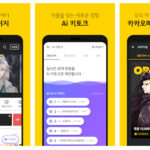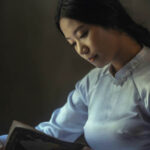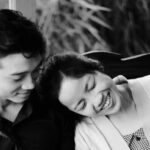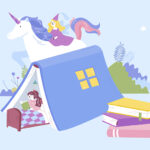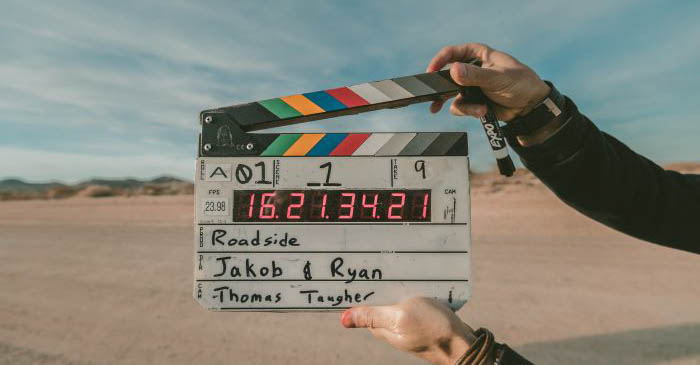
International interest in Korean cinema has grown over time, spiking most recently with Parasite’s Palme d’Or at Cannes and its historic Best Picture, Best Director, Best Original Screenplay, and Best International Feature Film wins at the Oscars. Korean cinema—represented abroad by popular directors like Bong Joon-ho and Park Chan-wook—has become known for its dramatic story lines and its incisive socio-political critiques, characteristics informed by Korea’s rich cinematic history.
This history is, in turn, at least partially indebted to the books that have served as inspirations for many Korean films. These books, which have been imaginative and compelling enough to spark the creative visions of filmmakers, carry many of the same themes which underpin the contemporary Korean films that have buzzing. To take a closer look, consider reading these four novels, all of which have been adapted into films (and level vigorous literary critiques at society).
I Have the Right to Destroy Myself by Young-ha Kim (trans. Chi-Young Kim)
Young-ha Kim’s novel I Have the Right to Destroy Myself inspired the 2003 film My Right to Ravage Myself, directed by Soo-il Jeon. The film appeared at the Busan International Film Festival and the Fribourg International Film Festival.
In I Have the Right to Destroy Myself, the unnamed narrator has the odd job of helping clients commit suicide. Seeking out Seoulites who he suspects lead unsatisfying, dreary lives, the narrator coaxes his targets into ending their lives with flourish, ostensibly to feed his own obsession with art and the aesthetics of death. Folded into the narrator’s winding, dubious stories are his two clients Judith and Mimi, and C and K—two brothers involved with the aforementioned two women. The narrator wraps his stories around all four people, novelizing them to fulfill his definition of a work of art.
I Have the Right to Destroy Myself delves into the peculiar ways we try to create meaning in our lives: sex, art, obsession, death. Peering into the eerie intersections of these four themes, Kim meditates on the ironic futility and bleakness of life as he draws out existential threads largely influenced by Western thought and art. Artistic themes suffuse the work as a whole, which includes explorations into painting, videography, novel writing, and performance art.
Flashy with its premise and grim with its prospects, I Have the Right to Destroy Myself will appeal to readers who are interested in aesthetic theory, postmodern angst, and uncomfortable existential considerations of suicide.
Our Happy Time by Gong Ji-young (trans. Sora Kim-Russell)
Maundy Thursday, directed by Hae-sung Song, was the seventh most popular film in South Korea in 2006. That hit film is based on Gong Ji-young’s novel, Our Happy Time.
The novel begins with the privileged Yu-Jung winding up in the hospital after her third suicide attempt. Her aunt, a Catholic nun, offers her the option of accompanying her to visit death row inmates instead of undergoing therapy. Choosing the former, Yu-Jung meets Yun-Soo, a man convicted of murder and rape and waiting for execution in prison. The two are drawn to one another, and they continue meeting and conversing, gradually letting their guard down and opening up to each other about their troubled pasts. By allowing themselves to be vulnerable with another person, they learn how to empathize, trust, and appreciate life in spite of its harsh realities.
Driven by touching portraits of its main characters, the novel alternates between first-person narratives by Yu-Jung and Yun-Soo. Yu-Jung’s narrative elaborates on her past and her struggles to deal with sexual trauma even as she leads a life of comfort. Yun-Soo’s narrative is conveyed through his diary entries in prison, and we learn about his hard life of poverty and misfortune. Rounding out the cast, Yu-Jung’s aunt is an intriguing character with her endearing combination of stubbornness, warmth, and religious undertones. Together, they form an interesting trio that humanizes the question of whether or not the death penalty is moral.
Readers looking for a heartfelt tearjerker would enjoy Our Happy Time, a book that holds out hope for the possibilities of vulnerability and human connection.
Our Twisted Hero by Yi Munyol (trans. Kevin O’Rourke)
The 1992 film Our Twisted Hero, directed by Jong-won Park, is based on Yi Munyol’s novel of the same name. The film won the prize for Best Film at the Chunsa Film Art Awards.
When Pyongt’ae moves from his metropolitan elementary school in Seoul to a rural school in the countryside, he believes that his success and high grades will follow him. However, he runs up against the wall of a new social hierarchy that he can detect but can neither understand nor control. He quickly learns about the imposing Sokdae, the manipulative class monitor who has his classmates and even the teacher in the palm of his hand. As Pyongt’ae schemes to topple Sokdae’s despotic rule of the classroom, he irritates his peers and suffers the painful consequences of upsetting the social order.
Our Twisted Hero won author Yi Munyol the prestigious Yi Sang Literary Award in 1987 and is a layered novel that works on multiple levels. On one level, it’s a story about children, their unique structures of power, and their capacity for cruelty. On another level, it is an ambiguous political allegory that weighs the costs and benefits of despotism against those of democracy; it also speaks to South Korean history and its regime changes during the mid- and late-twentieth century. Finally, it thematizes the struggle between the individual and the state, questioning how much political agency one can ever really have in the face of oppression and coercion.
Though it’s a story told from the vantage point of children, Our Twisted Hero would be a great thought-provoking read for those interested in sociopolitical systems and South Korean history.
The Dwarf by Cho Se-hŭi (trans. Bruce and Ju-Chan Fulton)
The 1981 film A Ball Shot by a Midget, directed by Won-se Lee, was inspired by Cho Se-hŭi’s The Dwarf and magnifies the story of one family’s demise as South Korea powers through rapid—and often brutal—social and economic change.
The Dwarf is a collection of twelve interlinked stories that paint a sprawling tableau of South Korean society in the 1970s as it grinds through industrial and economic development. After the Korean War, South Korea’s rush to join the top of the capitalist global economy takes a heavy toll on its people—particularly the poor. The eponymous dwarf of the novel embodies their plight. Kim Pul-i is a handyman, husband, and father who stands three feet ten inches tall. As he appears as a character in many of the stories, we see how he and his family are driven to destitution by a social system that crushes its poor with abominable factory working conditions, maltreatment of their health, and housing and financial traps.
The Dwarf won the Dong-in Literary Award in 1979 and has become an important work of twentieth-century South Korean literature. Though it concentrates on the despair of the lower classes, the novel critically represents the wider emerging class structure of the time, following the stories of working-class, middle-class, and upper-class characters. Perhaps because it was originally published serially as independent yet related short stories, the novel refracts and reflects images of the time such that they form labyrinthine figures that lead into and out of each other in unexpected ways.
With its intricate examination of society, The Dwarf would appeal to readers interested in a somber fictional take on modern Korean history and the global impacts of industrialization and capitalism.






